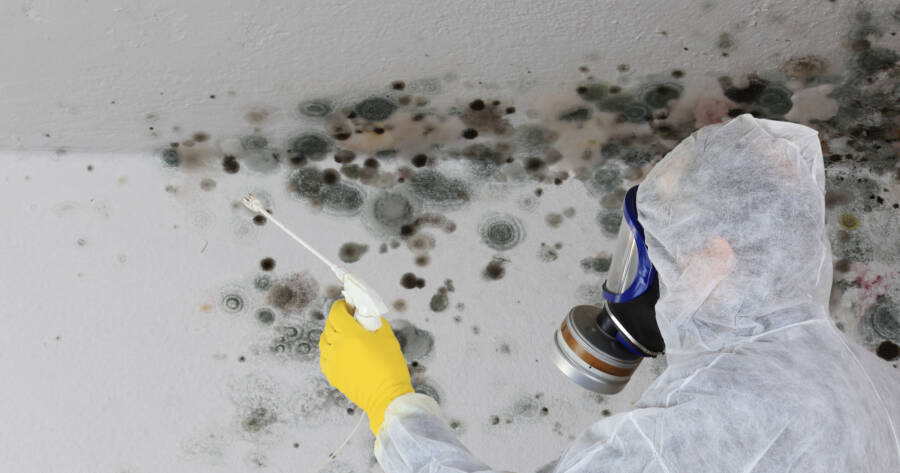Mold can make you feel sick and do serious damage to your house – often while hidden in plain sight. So how can you tell if you have mold? Fortunately, you can learn about the signs of mold, and whether you need mold removal for your home.
Unpleasant, Musty Odor
One of the earliest signs of mold in a home is a musty smell. Mold gives off a distinctive, earthy odor that often smells damp. This smell can linger in areas where mold is growing, even if you can’t see the mold itself.
The smell is usually strongest in rooms that tend to hold moisture, such as bathrooms, basements, or laundry rooms. If you notice a strange odor that doesn’t go away with regular cleaning, it’s worth investigating further. The source of the smell could be hidden mold behind walls, under floors, or in the ceiling.
Visible Mold Growth
The most obvious sign of mold is seeing it. Mold can appear in different colors, including black, white, green, or even orange, and it can grow on a variety of surfaces. This includes walls, ceilings, floors, and even furniture.
In bathrooms, mold often appears as black spots in the grout between tiles or around the bathtub. In basements or other humid areas, you may see fuzzy patches of mold on walls or furniture. Any visible mold growth, no matter how small, should be addressed immediately to prevent it from spreading.
Water Damage and Stains
Mold needs moisture to grow, so any sign of water damage could be a warning that mold is present. Look for water stains on walls, ceilings, or floors, which can appear as discolored patches, often yellow or brown.
Peeling paint or wallpaper is another clue that moisture might be trapped inside your walls, creating the perfect environment for mold. If you have recently experienced a leak or flooding in your home, it’s essential to check for mold, especially in areas where water may have seeped into hidden spaces.
Health Issues in Your Home
Mold can cause a variety of health problems, particularly for people with allergies or respiratory conditions like asthma. If you or your family members are experiencing unexplained health issues, it could be due to mold in your home.
Symptoms of mold exposure include sneezing, coughing, watery eyes, and skin irritation. In more serious cases, mold can trigger asthma attacks or cause chronic sinus infections. If these symptoms are worse when you’re at home and improve when you’re away, it’s a strong indicator that mold might be the cause.
Condensation on Windows or Walls
Condensation is another sign that your home may have a moisture problem, which can lead to mold. If you frequently see condensation on windows, walls, or even floors, it means the air in your home is too humid.
This excess moisture can create an environment where mold thrives, especially if it’s left untreated for a long period. Consider using a dehumidifier to control moisture levels and check areas with condensation for any signs of mold growth.
Don’t Let Mold Invade Your Home
Mold can cause serious issues for your home and your health, so it’s important to spot the signs early. Whether it’s a musty odor, visible growth, water damage, or health symptoms, being aware of the warning signs can help you take action before the problem worsens.
If you notice any of these signs in your home, it’s best to address the moisture source and consider professional help to remove the mold safely.
